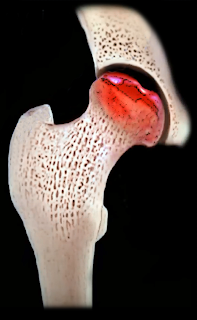
Female athlete triad is a condition that affects female
athletes such as gymnasts, dancers, or athletes with weight classifications
such as body builders. It is a syndrome in which amenorrhoea, osteoporosis, and
insufficient caloric intake affects certain groups of athletes. Each component
of the female athlete triad can occur from mild to severe. Not all components
need to be present, but if one component is found, the doctor should check for
the others. If you find a healthy, young female with stress fractures, ask
about her eating habits. The physician should examine the relationship between
the different components of the triad. The athlete will try to restrict their
diet in order to maintain lower body fat, and that may cause an imbalance of
energy (low caloric intake). This restriction of the athlete’s caloric intake
will lead to negative energy balance. Amenorrhoea results from energy
imbalance. Insufficient caloric intake is the most common cause of amenorrhoea
in female athletes, and it may or may not be associated with eating disorders.
Eating disorders can affect the brain’s regulation of the ovaries. This may
cause an absence of the menstrual cycle (amenorrhoea). It occurs in about 65%
of athletes such as runners and ballet dancers. There are two types of
amenorrhoea: primary and secondary. Primary amenorrhoea occurs when menstrual
cycles never start. Secondary amenorrhoea occurs when there is no menses for 6
months or absence of 3 or more consecutive menstrual cycles. Osteoporosis will
lead to bone fragility and often manifest as stress fractures. 90% of bone
mineral content occurs by the end of adolescence. The first step in treatment
is recognition of the disorder. Treatment includes prevention, correction of
the energy deficit, increase dietary calcium and vitamin D, maintaining bone
mass, resume normal menstrual function, and reduce training intensity. The
patient will need a multidisciplinary team including an athletic trainer, a
nutritionist, a psychologist, and a physician. Female patient with a history of
stress fracture should undergo a workup. This includes obtaining a menstrual
cycle history, nutritional consult, bone density, and psychological consult for
eating disorder.


